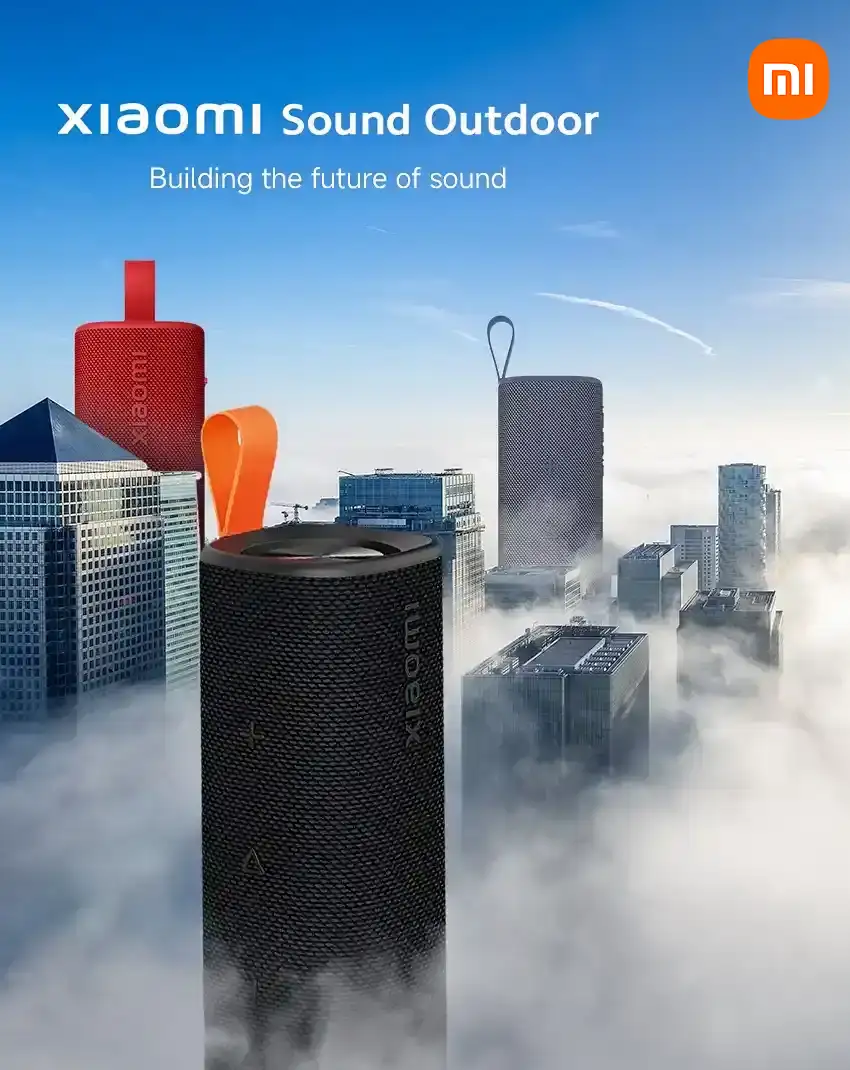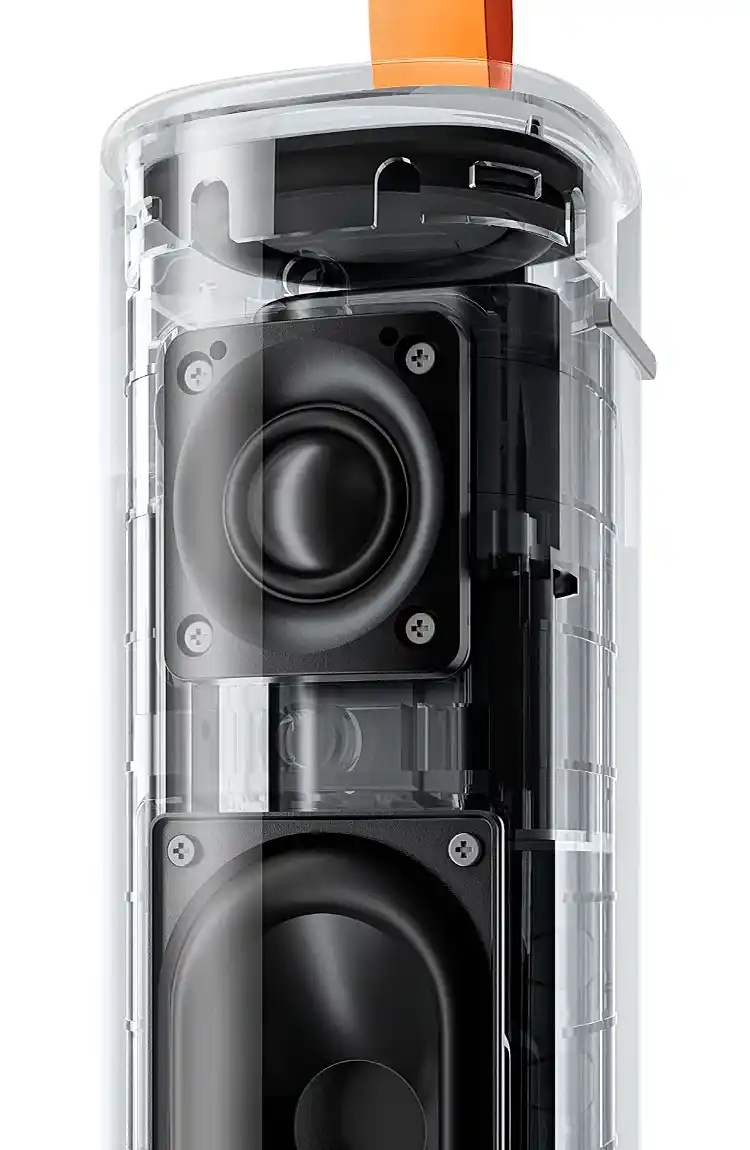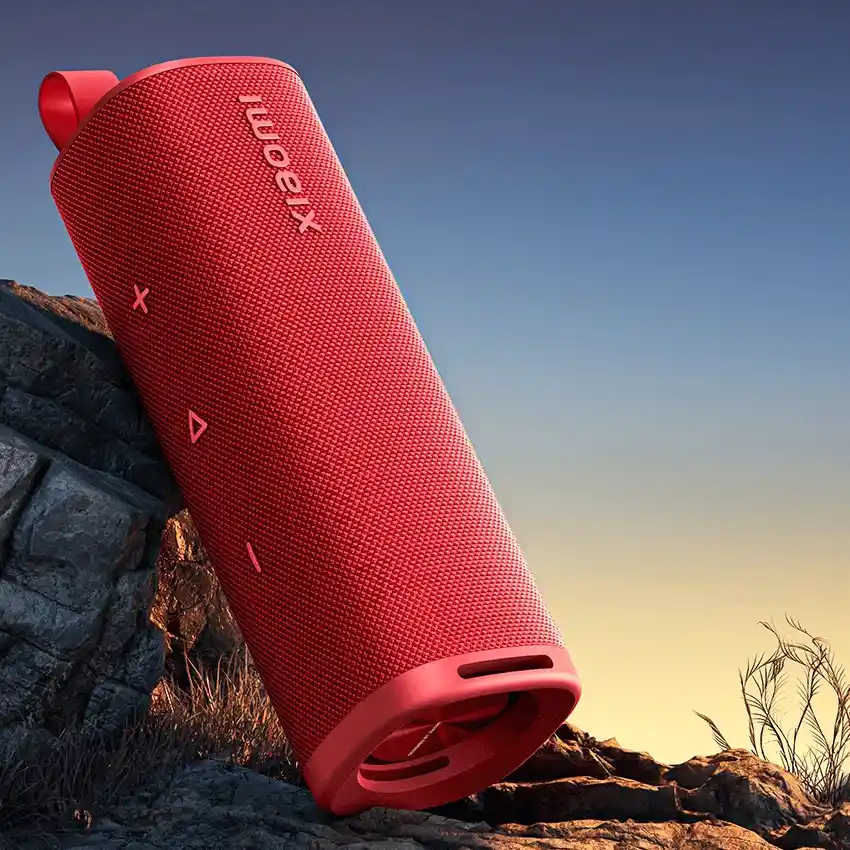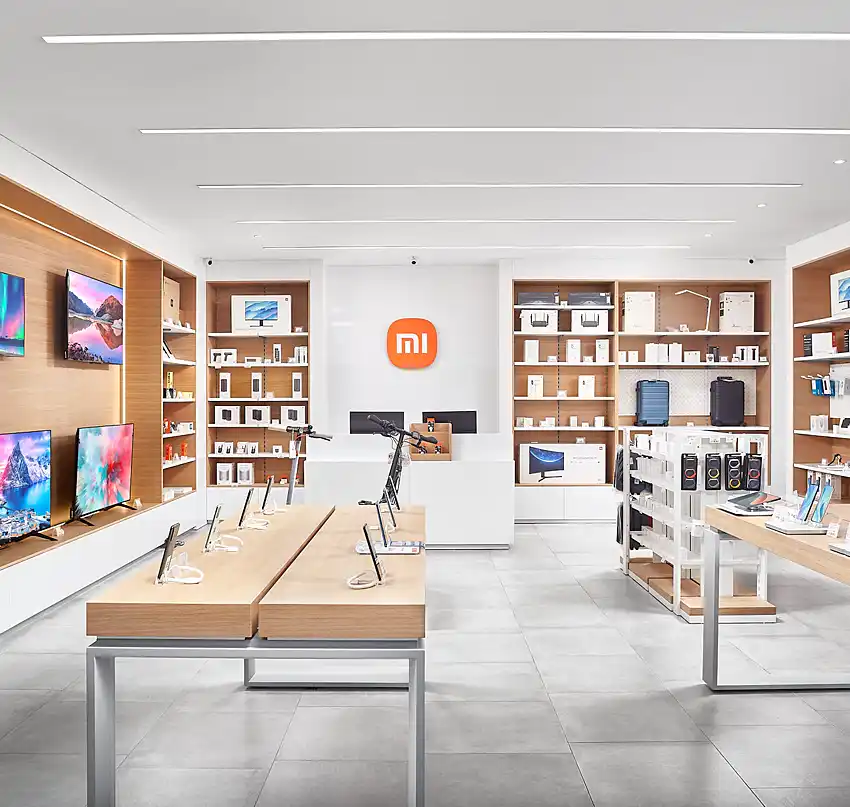Xiaomi Sound Outdoor Speakers
Founded in 2010, Xiaomi has exploded onto the smartphone market. The company overtook Apple in 2021 and is now second to Samsung in terms of global sales. At the same time, the company has evolved into a stylish design brand with a range of smart home and audiovisual products, one of which is the Xiaomi Sound Outdoor speaker.
At the time of writing, the Xiaomi website has a lineup of 10 portable speakers and a desktop soundbar. All offer Bluetooth connectivity (ranging from Bluetooth 5.0 to 5.4), some are dust and water resistant, and a few feature voice activation and customizable RGB lighting.
The Xiaomi Sound Outdoor was unveiled in April 2024 and won a Red Dot design award soon after. It's available in red, blue and black, features a sleek, modern design with Bluetooth 5.4 connectivity, and is affordably priced at around 50 USD.

Xiaomi Sound Outdoor Speakers Charging
Charging is via an included USB-C to USB-A cable. Xiaomi claims the speaker takes 2.5 hours to charge, though in my experience it's a lot faster – usually no more than an hour or so. The speaker switches itself off when fully charged; it can then play for 12 hours at 50% volume and several days at quieter levels.
Unlike a couple of other speakers in the company's lineup, the Xiaomi Sound Outdoor doesn't have RGB lighting, but that's hardly a problem. The only minor inconvenience is the absence of a battery life indicator (much like you'd expect to find on a phone), although the on-off button does start blinking when power dips to 20%. It's not ideal but it's better than nothing.
Sound Quality
Considering its form factor and price, sound is excellent across the entire spectrum, with a warm, resonant bass that's well defined and free of distortion. Overall the speaker makes a great companion for a phone or PC, and is ideal for listening to music and watching TV shows. Maximum output is 30W.
A feature Xiaomi mentions on their website is smart volume balancing, which describes how the speaker adjusts elements of the audio based on volume levels to ensure better and more accurate sound reproduction. This feature is especially welcome at subdued volumes where high and mid-range frequencies can sometimes be "suffocated" by disproportionately loud bass.

When used as an indoor speaker, it's designed to sit horizontally on its silicon feet, with the play and volume buttons facing upwards. This means that unlike cylindrical speakers that stand vertically, it's not capable of delivering true omnidirectional sound. This may or may not be obvious, but it's something to be aware of.
Stereo pairing is possible if two speakers are available. When the first speaker is connected to a phone or PC (or any other Bluetooth-enabled audio device), just press the pairing button on each speaker and they will automatically be assigned a stereo channel. I've not tested this but apparently the results are good.
Xiaomi Sound Outdoor Speakers Build
Build quality is very good. The Xiaomi Sound Outdoor feels solid and dependable. Xiaomi claims it's lightweight, though at almost 600 grams it actually feels quite weighty. And that too adds to the feeling of robustness. Buttons are large and clicky, and easy to locate when it's dark.

The mesh is plastic and the lanyard is a kind of durable rubber. Attempting to clean the speaker with a cloth is a bad idea since the mesh rapidly accumulates lint and other stray fibers. I use a dampened nail brush instead. The speaker is IP67-rated for dust and water resistance, which is fine for the occasional splash and outdoor use in light rain. It can survive underwater though I doubt it would survive too long.
Xiaomi Sound Outdoor Competition
The Xiaomi Sound Outdoor has positioned itself in a competitive market. In terms of aesthetics, price and functionality, obvious competitors include Sony's ULT Field 1 speaker and the JBL Flip 6. But IMO neither of these speakers is as stylish as the Xiaomi and both cost more. The only real differences I can find are that the Flip 6 has a battery life indicator (which admittedly is very useful) and the Sony has its ULT button which, when clicked, delivers extra bass.
If money isn't an issue then perhaps consider Bang & Olufsen's Beosound Explore. It's a premium product featuring a rugged, anti-scratch aluminium shell, a clean minimalist design and 360° omnidirectional sound. At 249 USD it costs about 6 times as much as the Xiaomi Sound Outdoor speaker, but it's a superior piece of hardware. The green version is shown below.
Xiaomi Pricing / Stores
A common question is how does Xiaomi manage to offer high-quality products at such low prices. The simple answer is they prioritize volume over profit margins, which are typically no more than 8-9%. Compare this approach to Apple's, where the cost-to-retail-price ratio of flagship phones is just over 35%. Even after taking into account the costs of overheads such as marketing and R&D etc, that ratio leaves plenty of room for profit and helps explain some of Apple's prices.
Xiaomi also spends much less on offline advertising than the likes of Apple and Samsung, preferring instead to cultivate a strong social media presence and win over influencers.
And let's not overlook the company's huge investment in retail outlets – a strategy that strips out middlemen and greatly increases both brand awareness and exposure. Xiaomi's first store outside of China, Hong Kong or Taiwan opened in Singapore in October 2016; they now have thousands of stores worldwide and tens of thousands in China.





